Debian auf Android-Tablet
Vortrag auf den CLT 2015
Über mich
- Systemadministrator bei NMMN IT-Services GmbH
- Hosting und Managed Server
- HA-Cluster
- ISP
- Besitzer (zu) vieler (latent) geeigneter Geräte für Linux
Idee
Debian auf einem (alternden) Android Tablet installieren:
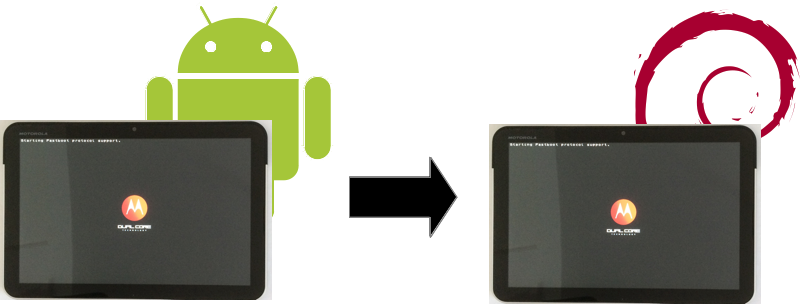
Ohne dass dies passiert:
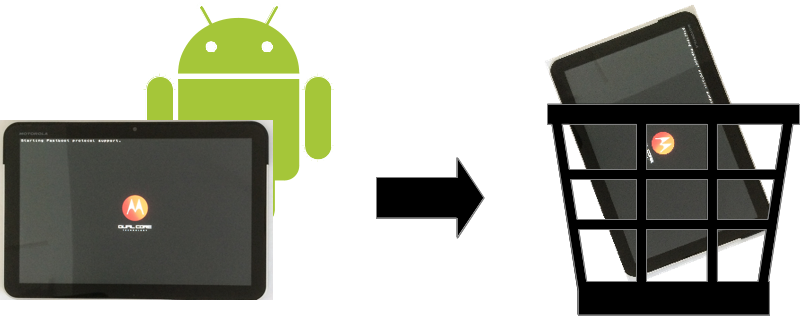
Die verwendeten Logos sind Eigentum der jeweiligen Projekte, siehe Urheberrechtshinweise
Ausgangspunkt
- Android ist schon ein normales Linux: Kernel bootet, hängt Root-FS ein, führt Init aus...
- Statt dem Android-Dateisystem hängt man ein eigenes z.B. von der SD-Karte ein → Win
- Hardware: Motorola Xoom Tablet (2x1Ghz, 1GB Ram, Wifi+3G)

Flashlayout
- Xoom hat einen Flashspeicher mit einer GPT-Partitionstabelle
- Vorhandene Partitionen:
- Boot
- Recovery
- System
- Und weitere mit Firmware-NSA-Foobar
Für meinen Ansatz nur Boot-Partition interessant
Backups
- Boot in das Recovery: Nandroid-Backup aller Partitionen
- Mindestens: Boot-Partition
- Hilfsreiche Vorlage vom laufenden System:
/proc/config.gz # KernelkonfigurationBootloader: unlocked
Voraussetzung für die nachfolgenden Schritte
$fastboot oem unlock
...
(bootloader) To continue, follow instructions on the device's display...
Wer es nicht kann/will: Alternativen
Toolchain
- Architektur des Build-Systems meistens x86/x86-64 != Zielarchitektur
- Build-Umgebung (Compiler etc.) muss dies abbilden (Cross-Compile)
- Die meisten Distributionen führen entsprechende Pakete
- Statisch gelinkte Toolchains (Endianess und Architektur beachten!) führt das Linaro-Projekt
Build-Umgebung vorbereiten
Beispiel mit Linaro
vagrant init -m nfq/wheezy && vagrant ssh
wget Paket -O- http://yaturl.net/d17 | unxz
export PATH=~/gcc-linaro-arm-*/bin:$PATH
alias makearm="make -j2 ARCH=arm CROSS_COMPILE=arm-linux-gnueabihf- \
CFLAGS="-mfloat-abi=softfp" CXXFLAGS="-mfloat-abi=softfp""

Weil einfach einfach besser ist
Kernel-Sourcen
- vom Hersteller (Danke GPL!)
- (meistens) neuer und aktueller: Custom Rom-Szene
- Beste Quelle: xda-developers
Oldschool
git clone https://github.com/TeamEOS/kernel_moto_wingray.git
cd kernel_moto_wingray
makearm help
> [...]
> stingray_defconfig - Build for stingray
makearm stingray_defconfig
makearm menuconfig
Kernelkonfiguration
ANDROID_PARANOID_NETWORK=nANDROID_LOW_MEMORY_KILLER=nCONFIG_BCMDHD_FW_PATH=<Pfad>CONFIG_BCMDHD_NVRAM_PATH=<Pfad>
Wenn man zufrieden ist: makearm
Mit etwas Glück kompiliert es beim ersten Anlauf...
Debian System erzeugen
Debootstrap to the rescue!
apt-get install binfmt-support qemu qemu-user-static debootstrap
mkdir xoom_debian
debootstrap --foreign --arch=armel wheezy ./xoom-debian
cp /usr/bin/qemu-arm-static xoom_debian/usr/bin
chroot xoom_debian /debootstrap/debootstrap --second-stage
chroot xoom_debian dpkg --configure --pending
Initrd generieren
cd kernel_moto_wingray
makearm INSTALL_MOD_PATH=../xoom_debian modules_install
cp System.map ../xoom_debian/boot/
cp arch/arm/boot/zImage ../xoom_debian/boot
chroot ../xoom_debian /bin/bash
apt-get install initramfs-tools
mkinitramfs -o /boot/initrd.img.gz $(ls /lib/modules)
Bisher geschafft:
- Kernel
- Initrd
- Debian Grundsystem

Angriff
Vorher SD-Karte partitionieren und Dateisystem erstellen
fastboot -c "root=/dev/mmcblk0p2" flash:raw boot zImage initrd.img.gz
creating boot image...
creating boot image - 6316032 bytes
sending 'boot' (6168 KB)...
OKAY [ 0.906s]
writing 'boot'...
OKAY [ 1.801s]
finished. total time: 2.707s
fastboot reboot
rebooting...
finished. total time: 0.564s
Ergebnis
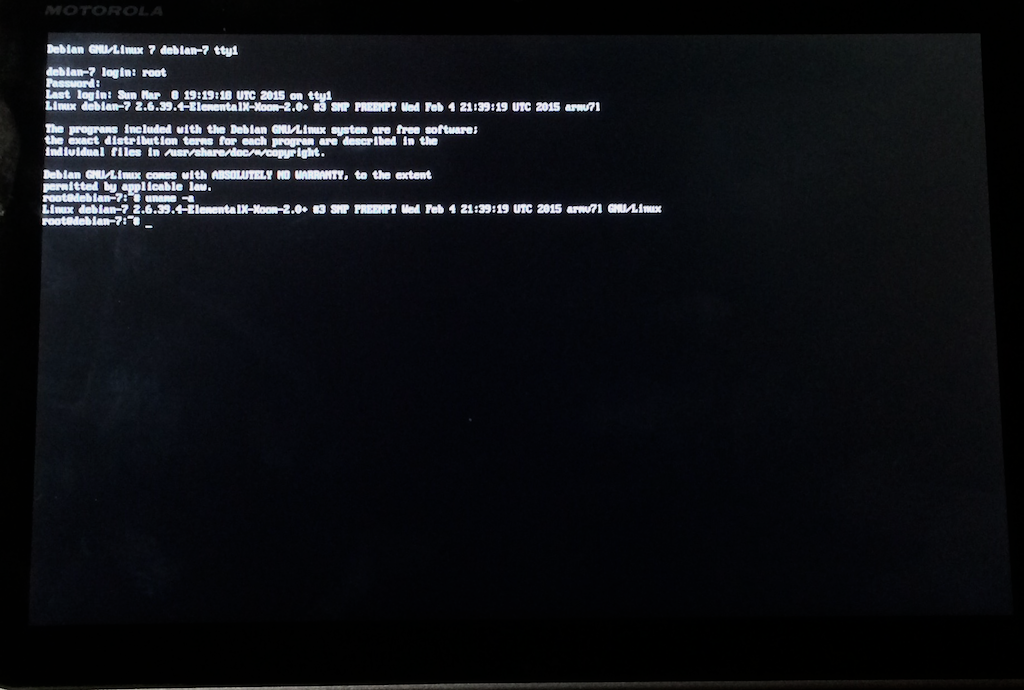
Win!

Xorg
Handgestrickte Xorg.conf wegen Touchscreen nötig
[...]
Section "InputDevice"
Identifier "Touchscreen"
Driver "multitouch"
Option "Device" "/dev/input/event6"
[...]
evdev-Treiber funktionierte nicht - so nur relative Bewegung → Mauszeiger
KDE
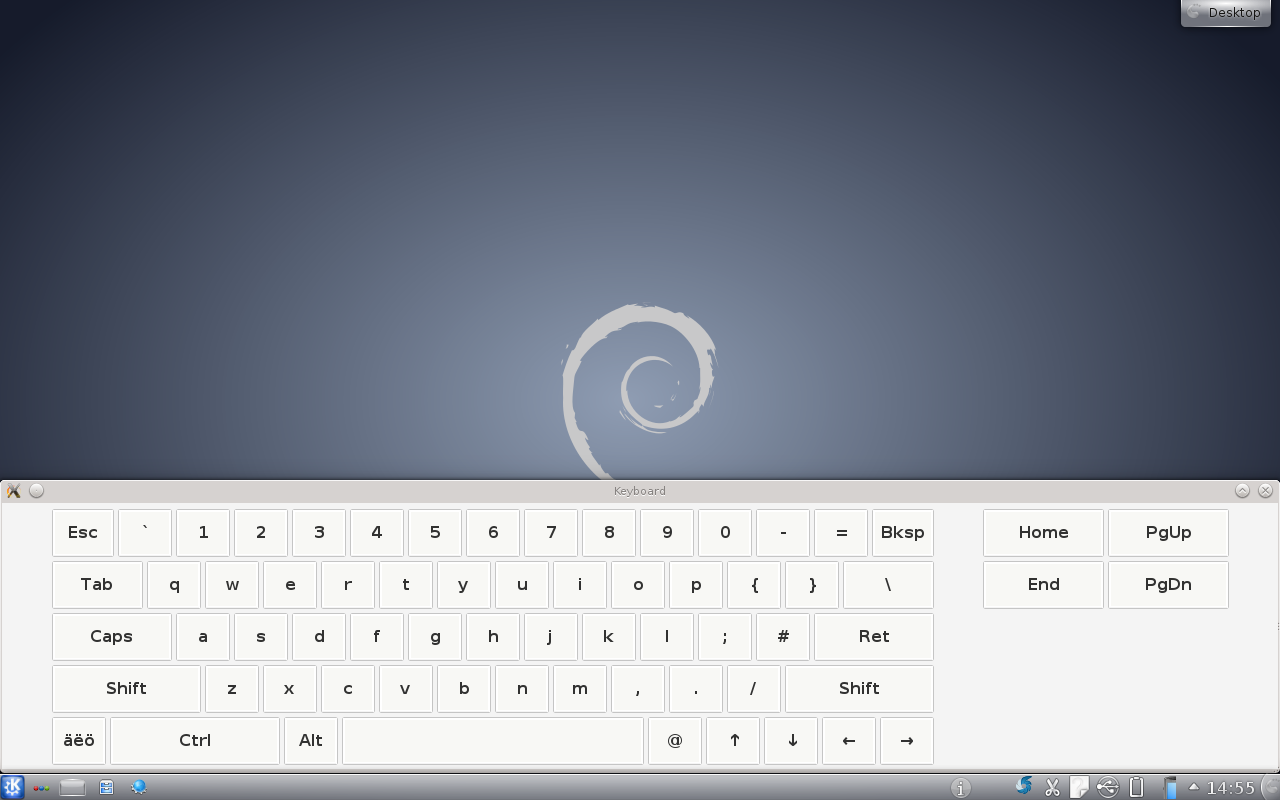
Etwas langsam, funktioniert in den Grundzügen
Gnome Shell
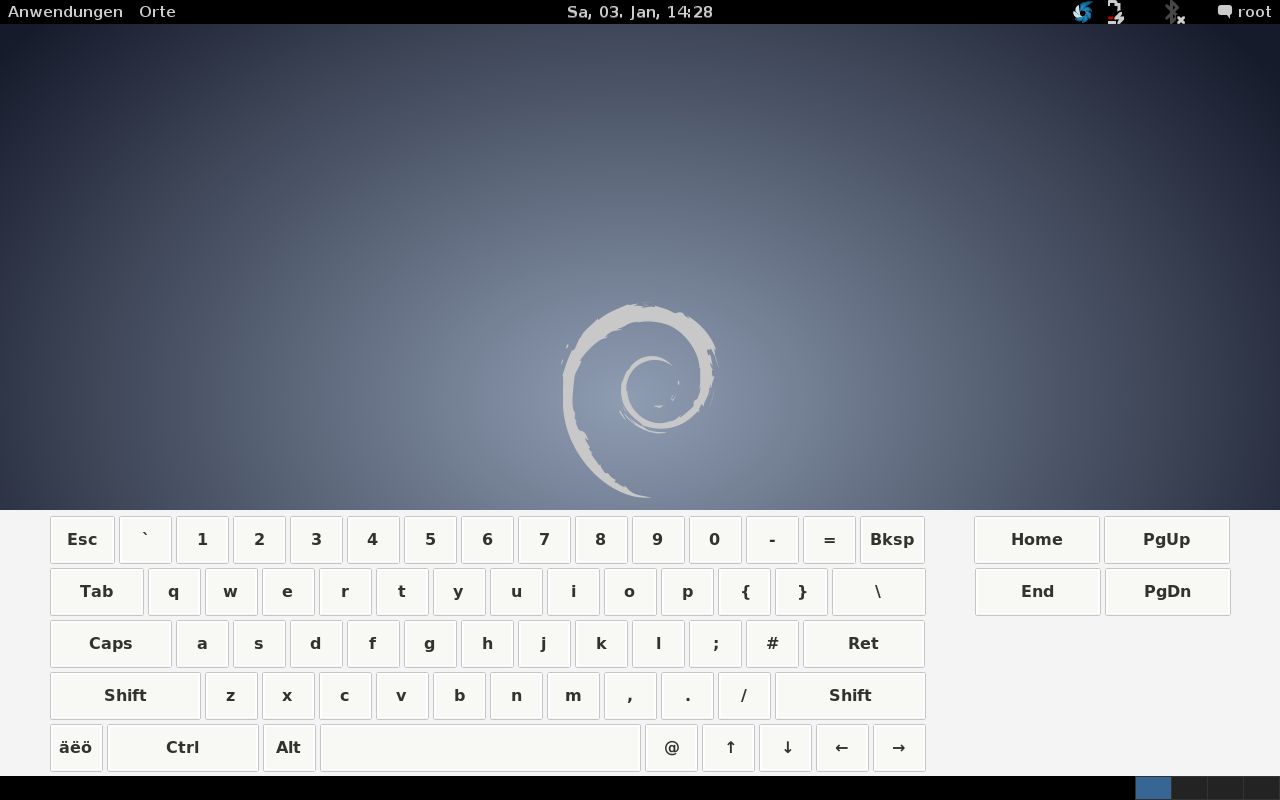
Etwas schöner auf dem Tablet, aber noch kein Knaller
Matchbox
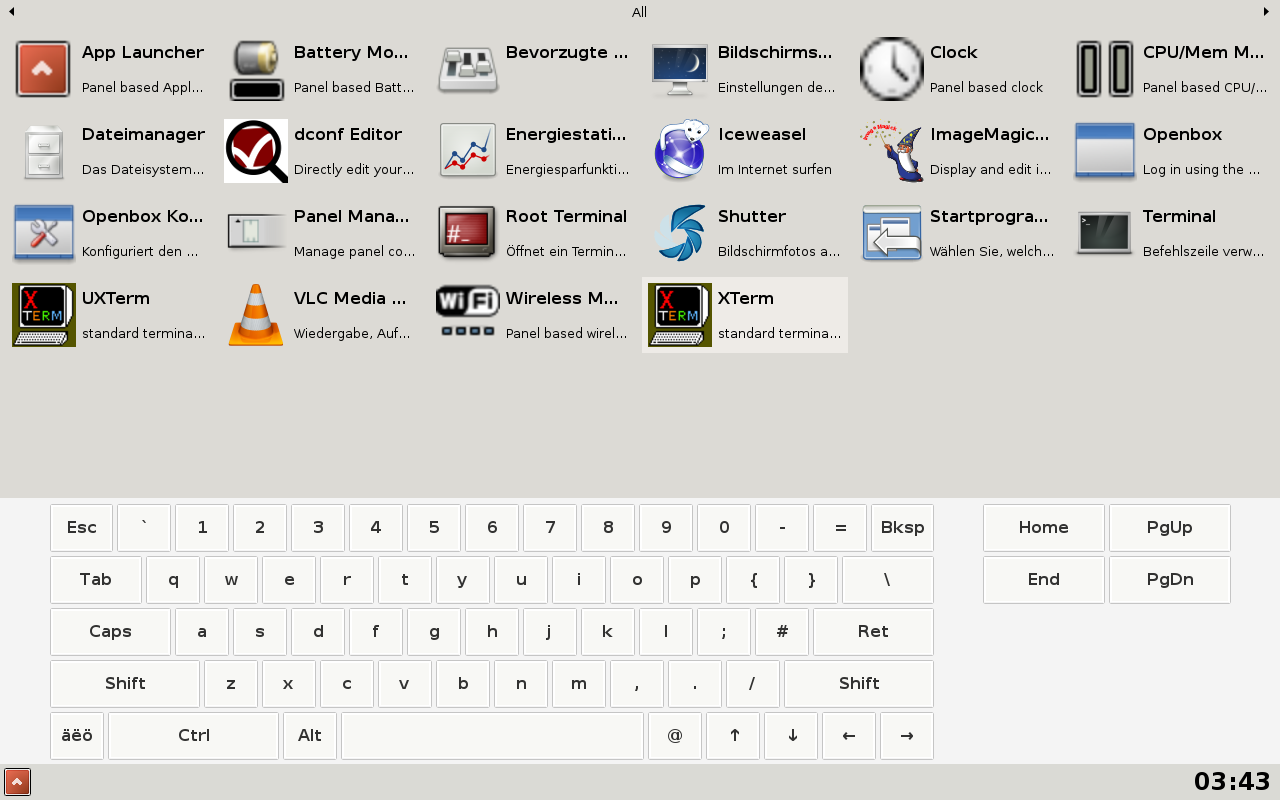
Viel besserer erster Eindruck, leider keine Weiterentwicklung mehr
Bugs und Probleme
- Maus/Touchscreen
- Display und
fbcon-Kernelmodul (→fbcon=map:1) - Generelle Unterstützung der WMs und DEs für Touchscreens

Im Jahr 2015
Alternativen
Wenn man nicht an die Boot-Partition will oder oder oder...
- Chroot z.B. mit Debian-Kit und dann VNC
- Cooler: Selber Weg aber abschalten des Android-Stacks: X11 running on Nook Color without Android stack
Trotzdem immer vorher Backups machen
Hilfreiche Links
Ende
- Fazit: Noch Bastelarbeit notwendig, aber Grundsystem fertig
- Will ich noch machen: Kernel und Dateisystem als
armhf - Fragen?
Danke für eure Aufmerksamkeit
Urheberrechtshinweise
- Debian-Logo: https://www.debian.org/logos
- Android-Logo: http://developer.android.com/legal.html